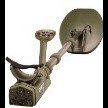Pulse Induction & VLF In One Detector. Don't Piss On My Dream.
-
Similar Content
-
- 9 replies
- 890 views
-
- 25 replies
- 1,701 views
-
- 6 replies
- 653 views
-
- 42 replies
- 6,093 views
-
- 9 replies
- 19,210 views
-
- 21 replies
- 49,523 views
-
-










Recommended Posts
Create an account or sign in to comment
You need to be a member in order to leave a comment
Create an account
Sign up for a new account in our community. It's easy!
Register a new accountSign in
Already have an account? Sign in here.
Sign In Now